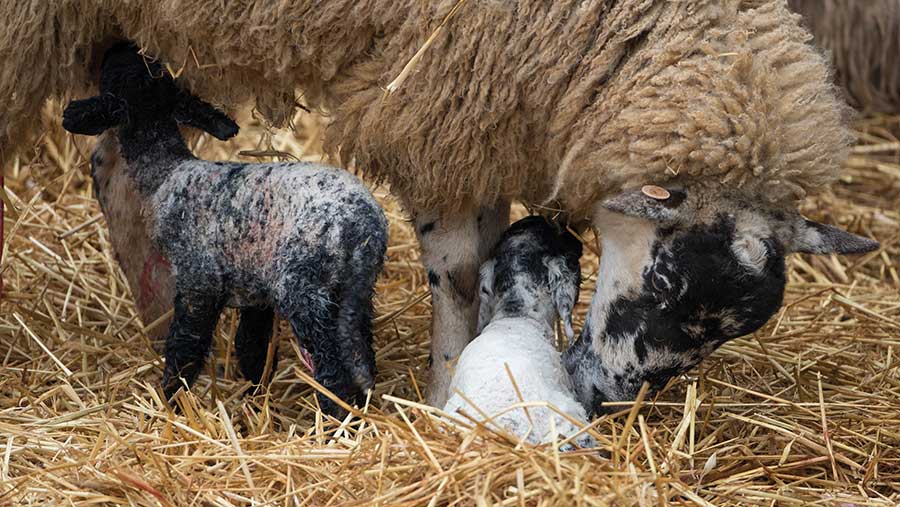3 ways to reduce use of antibiotics at lambing
 © Tim Scrivener
© Tim Scrivener Use of oral antibiotics in neonatal lambs has almost halved since 2016. How can the industry capitalise on that progress?
The sheep industry’s use of antibiotics is relatively low compared with other sectors.
But complacency would be foolish – lambing time is when most antibiotics are sold to the sheep sector and presents the greatest opportunity for reduction.
Antibiotics are vital in protecting animal welfare and production efficiency, so strategies need to be measured to improve the immune status of animals and reduce the disease challenge.
See also: Video: How farmer lambs 1,000 ewes inside without oral antibiotics
About the author

Ed joined Thrums Vets in 2015 and enjoys all aspects of farm animal vetting, but has a particular interest in sheep health and production. Outside of work he helps run the family farm in Glenisla.
The numbers
- 28.3mg/kg Sales of antibiotics (mg/kg) in livestock reached in 2022 (Source: Ruma)
- 47.9% Decrease in the use of oral antibiotics in neonatal lambs since 2016 (Source: Ruma)
- 2.5 million UK sheep not vaccinated for abortion
- 26.5% Colostrum, should measure this on a Brix refractometer
To cut antibiotics use, we must refine our approach to vaccination, nutrition, hygiene and colostrum management.
1. Vaccination
While oxytetracycline is often used in response to an outbreak of enzootic abortion (EAE), it is never acceptable to use as a planned preventative strategy.
Vaccination should be the primary strategy for preventing EAE and reducing antibiotics use.
In most scenarios, the vaccine needs be given as a single dose prior to tupping to give lifetime protection. If the cost of the vaccine is split across the productive lifespan of the sheep, it is highly cost-effective.
2. Nutrition
Many diseases encountered at lambing are underpinned by sub-optimal nutrition. If you get nutrition right, you will find cases of watery mouth, joint ill and mastitis will fall.
In the run-up to lambing, there are two key areas to consider:
- At scanning, body condition score (BSC) all ewes. Those lower than the target of 2.5-3.5 should be separated for preferential treatment.
- Review the feed plan with your vet or nutritionist (first carry out forage analysis).
At three weeks pre-lambing, carry out a metabolic profile of ewes using blood sampling to see how they are responding to the diet, and check whether their requirements for energy and protein (minerals and trace elements can be checked too) are being met.
If they are not, timely alterations to the ration and/or how it is being fed can be made.
These steps will help ensure that ewes are in good condition, lambs are an appropriate weight, and colostrum quality and quantity are spot on.
3. Colostrum
Lambs require 50ml/kg of high-quality colostrum in the first two hours of life, and a total of 200ml/kg in the first 24 hours.
If there is doubt as to whether the lamb has sucked, colostrum should be supplied by teat or stomach tube.
The dam’s own colostrum, or that harvested from another ewe on the farm, will always be superior (surplus can be frozen in small batches, but a microwave should not be used for defrosting).
If this is not available, pooled cows’ colostrum could be used, or a commercial powdered substitute, but beware of variation in quality between brands.
Caution when using antibiotics
On some farms, oral antibiotics for newborn lambs may be required. If, and when, these are used, their use should be refined and targeted.
Strategies for reduction include:
- Challenge yourself to see how far you can get into lambing before opening the first bottle
- Target lambs you know are at higher risk of infection, such as lambs born to thin ewes, triplet lambs, low-birthweight lambs, or lambs that have had a difficult birth or been born into unhygienic conditions.
Lambs that do not fall under these categories should not receive antibiotics, provided colostrum provision has been adequate.
